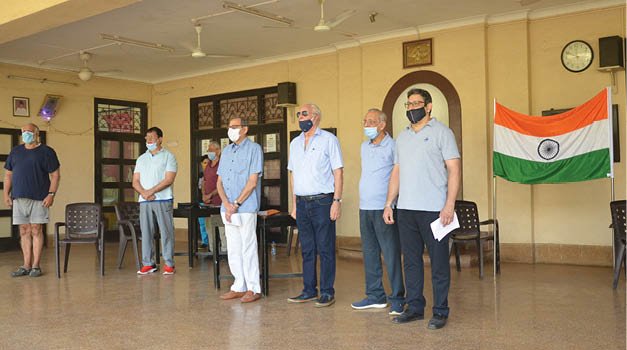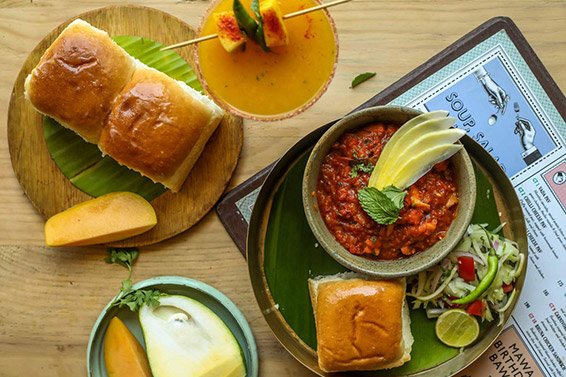How India makes Parsi babies
The Parsis of India are a unique community, but their numbers are declining fast. In an effort to change this, the government is spending $1.5m to encourage them to have more children.

Persis Aspi Kamakhan still cannot believe her luck. She clucks and coos at her baby daughter, Hufriya, as she tries to dress her in a new red outfit.
“She’s very mischievous,” Kamakhan says proudly. “That thing that I wanted for 11 years of my marriage – finally I got this baby. It’s like we were given our very own Kohinoor diamond.”
Kamakhan and her husband had spent all their savings on unsuccessful IVF treatment, and had given up hope of having a child. Then she heard about Jiyo Parsi – a government-funded scheme set up to encourage Parsi couples to have bigger families.
Kamakhan got in touch with a gynaecologist associated with the scheme who promised to find out what the problem was and solve it.
“Persis had dealt with a lot of disappointments,” says Dr Anita Pandole, recalling their first meeting. “Of course, we counselled her there was no guarantee she would get pregnant. But when she did her first cycle with us, she conceived. First time, first shot.”

Hufriya was born in October – one of 30 babies delivered so far with the support of the Jiyo Parsi scheme. Seven of them, like Hufriya, were delivered as a result of fully paid-for fertility treatment – the scheme operates a sliding scale of financial assistance for IVF, depending on a couple’s income. A further 17 women are pregnant. The aim is to deliver 200 new Parsi babies over five years.
“It’s very gratifying,” says Pandole, who is also a Parsi. “We are such a small community that even if there is just one extra Parsi baby, I think it’s a good thing.”
It’s estimated that there are 60,000 Parsis in India – half as many as there were in the 1940s. For every Parsi born, four die. The decline in numbers is blamed on late marriage, no marriage, or mixed marriage with non-Parsis.
So why is the Indian government committing resources to bolstering the Parsi headcount, when the country is struggling to control the size of its population?
“I want them to survive,” says the Minister of Minority Affairs, Najma Heptulla. “The Parsis have contributed greatly to India as far as education and industrialisation are concerned. There are many famous names like [industrialists] Tata and Godrej, and they have been distinguished lawyers and politicians too.”

Most of India’s Parsis live in Mumbai – a city whose statues and buildings pay homage to a glorious past when Parsis were a dominant force as traders and shipbuilders, administrators and wealthy philanthropists.
Some time after the beginning of the 8th Century, a group of Zoroastrians fled religious persecution in Iran, and arrived on India’s west coast. They settled in Gujarat – the word Parsi means Persian.
In the 17th Century, they began to migrate to Mumbai, where they built their fire temples, and formed alliances with the British.
The Parsi community is more Westernised than many in India, which is partly why it has shrunk in size. They sometimes delay marriage while they save or wait for a property. And couples began family planning decades ago to ensure they could pay for a good education for their children – which for them is as important for girls as it is for boys. Parsi women are high achievers at work, which often makes them reluctant to marry and start a family at an early age. And being single is socially acceptable – 30% of Parsis never marry.
Zoroastrianism

- Zoroastrianism is one of the world’s oldest monotheistic religions – Zoroastrians believe there is is one God called Ahura Mazda (Wise Lord)
- Founded by Zoroaster, also known as Zarathustra (pictured above), in Persia about 3,500 years ago
- Once one of the world’s most powerful religions, it is now one of the smallest
- Zoroastrians are roughly split into two groups, Iranians and Parsis – there are an estimated 110,000 Parsis around the globe and in 2006 the New York Times reported there were probably less than 190,000 Zoroastrians worldwide
- They worship in fire temples and believe fire represents God’s light or wisdom
Read more about Zoroastrianism
Anxiety about a disappearing population has intensified a long-running debate about who can be counted as a Parsi. More than a third of Parsis marry non-Parsis. A Parsi man’s children will always be Parsi whoever he weds. But if a Parsi woman marries out, her sons and daughters are not deemed Parsi.
Goolrukh Gupta is one of those women. In 1991 she married a Hindu. Until 2003 nobody stopped her from attending a fire temple or the Towers of Silence – the place Parsis consign their dead – in the town of Valsad in Gujarat where her parents live. Now, she says, the local Parsi panchayat, an administrative body, has decided women like her are not welcome at those holy places. Her biggest fear is that she will not be allowed to attend the last rites when her elderly parents die.
“The thought my parents would be no more tomorrow and I would not be allowed to enter is like mentally abusing a woman every second – the thought is very unpleasant for me. We’re three sisters married to non-Parsis. So, none of us would be able to attend if this law continues. It’s like bullying people – who gives them the right to do that?”

Goolrukh Gupta sees this as sex discrimination and has been fighting it in the courts for five years. She is also critical of the Jiyo Parsi campaign as couples only qualify for assistance if the husband is Parsi.
But for Orthodox Parsis, that is how it should be.
“Sorry as one might feel at a personal level, they need to recognise that if they’ve chosen to marry out they’ve broken the rules of the religious customs and practices and there is a price one pays for it,” says Khojeste Mistry, a trustee of the Bombay Parsi Panchayet, and founder of Zoroastrian Studies – an organisation dedicated to disseminating information about the religion.
“If we want to preserve the Parsi ethnic identity then marrying out is not the answer. If we turn a blind eye to our kids marrying out, then I do not see Zoroastrianism surviving into the next century. These are the people who are breaking down something we’ve preserved for 3,500 years – they’re destroying the fabric of community existence.”
In any case, he says, changing the rules on who is a Parsi will not make much difference to population figures.

“Out of 100 children born to parents of mixed marriage, only one will marry a Parsi. So if the emphasis is on preserving ethnicity, then surely intermarriage and welcoming children from intermarried families is not the answer.”
Twenty-four-year-old Ria (not her real name) is a professional Parsi woman searching for a Parsi boyfriend on Mumbai’s dating scene. But she says she will look outside the community if no-one suitable turns up.
“Why should one stoop down? If a guy is just sitting on a couch and doing nothing and living off his parents, that’s not exactly where you want to be. I would love to marry a Parsi, and that’s my first and maybe only preference. But I’m not going to settle for someone who’s not doing well in life and who I do not see a happy future with.”

Two other young Parsis, Kaizad Deboo and Zeenia Vakil, both looked for a Parsi partner – and found each other. At their wedding on a steamy night in Colaba on the southern tip of Mumbai, hundreds of guests are driven inside by torrential rain. The hubbub is deafening, the waiters move artfully among the crowd with trays of canapes, and the drinkers stand three-deep at the bar.
Upstairs in the function room, Kaizad, who’s 34, awaits the arrival of his 30-year-old bride.
“It took me five years to convince her to marry me, because she’s far more gorgeous than me,” he says.
Both of them work in the airline industry and are based in Dubai. So will they do their bit to halt the decline of the Parsi population – are they planning children?
“Of course, no doubt about it,” Kaizad says. “And we start from tonight itself… Just kidding!”




